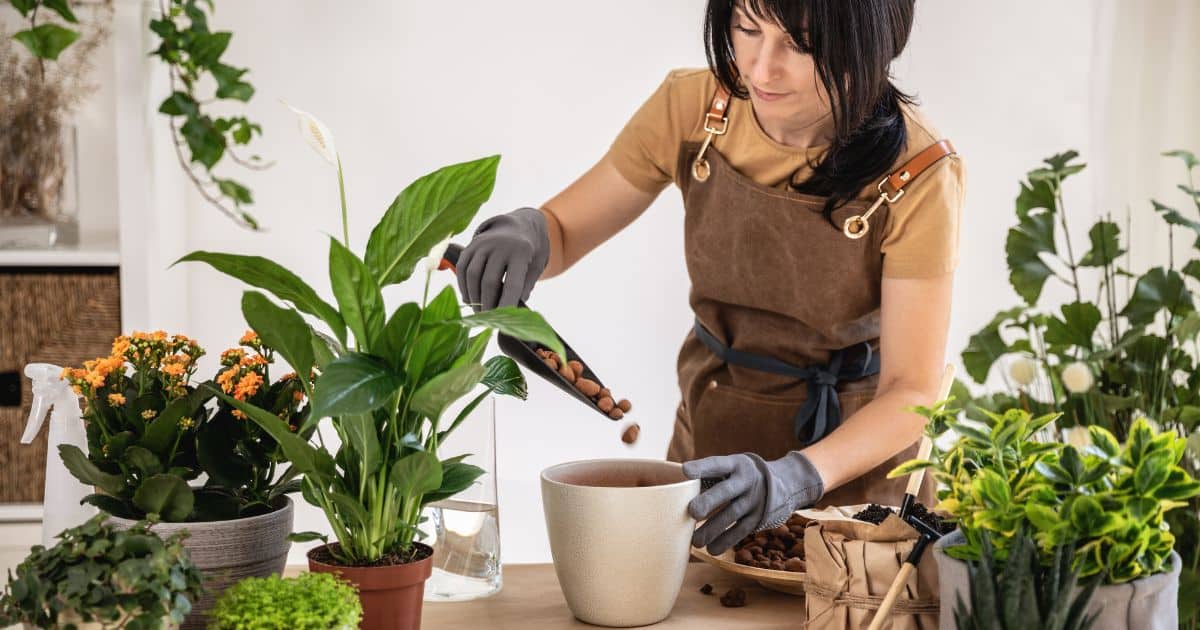How to Grow Garlic in Arizona in 5 Easy Steps
Welcome, fellow desert dwellers! So, you want to know how to grow garlic in Arizona? Well, you’re in the right place.
Whether you’re kickstarting your gardening journey or just looking to add some oh-so-zesty garlic to your Arizona garden, I’ve got your back.
In this article, on how to grow garlic in Arizona, I will clearly outline the ins and outs of growing garlic right here in the Grand Canyon State.
Spoiler alert: It’s super easy!
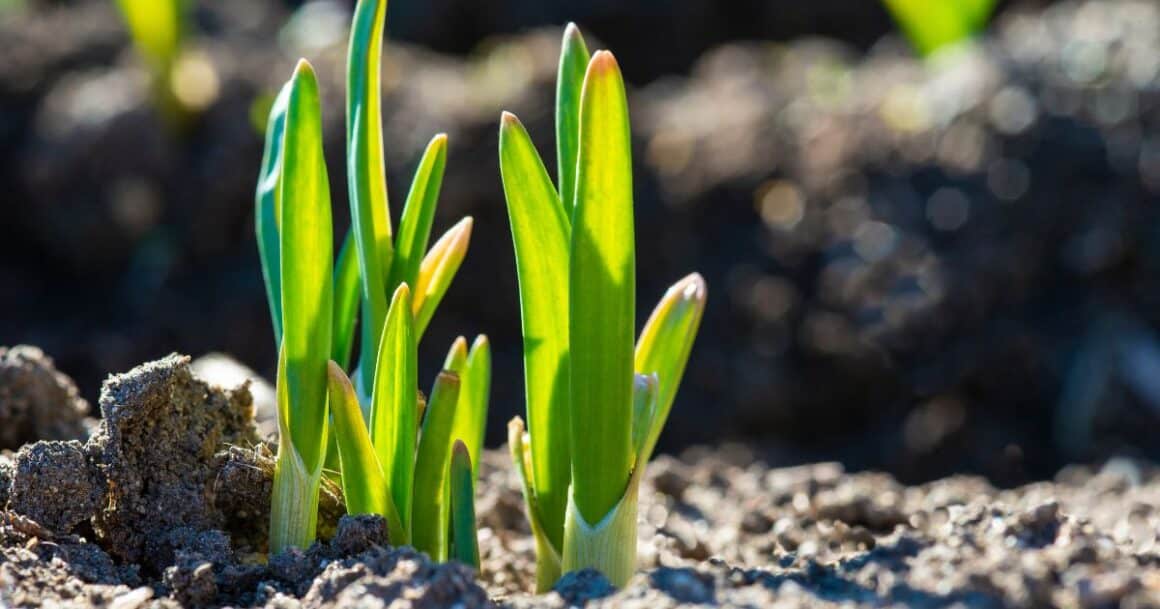
How to plant garlic in Arizona
A Step-by-step guide to Planting Garlic in Arizona
The Best Time to Plant Garlic in Arizona (Based on Planting Zone)
First things first, timing is everything in the world of garlic.
Our planting zones vary in Arizona, so it’s essential to know your zone. Generally, Arizona’s best time to plant garlic falls from late September to early October.
As temperatures cool but the soil still holds some warmth, it’s the sweet spot for our garlic cloves to take root.

Determine your Planting Zone
Arizona’s got a bit of a split personality when it comes to planting zones, thanks to its diverse landscapes. Here’s a quick rundown of the three main planting zones you’ll encounter:
1. Low Desert (Zone 9-10)
This is where the heat cranks up, my friend.
The low desert includes places like Phoenix and Tucson. Summers can feel like stepping into an oven, and winters are mild.
Water-wise gardening and perfect planting location and timing is the name of the game in the low desert of Arizona.
2. Mid-Desert (Zone 7-8)
Moving up a bit, we hit the mid-desert. Places like Flagstaff and Sedona fall into this category.
Summers are warm, but you’ll get a taste of that winter chill with occasional frosts. Garlic and herbs that thrive in a temperate climate will do well here.
You’ll have a bit more flexibility with your plant choices compared to the low desert.
3. High Desert (Zone 5-6)
At the top of the Arizona ladder is the high desert. Think of places like the Grand Canyon and Flagstaff’s higher elevations.
Here, you’ll experience true seasons, with cold winters and mild summers.
Garlic and herbs that love cooler temps will shine in this zone. It’s like having a little slice of a more traditional gardening experience.

The Different Types of Gardens
Let’s chat about the different garden types that are perfect for planting garlic and other herbs in the beautiful Arizona desert.
Each garden style has its perks, so pick the one that suits your space and style.
In-Ground Beds
Ah, the classic choice! In-ground beds are like the OG of gardening. They’re basically what most people think of when they imagine a garden.
These are great for garlic and herbs because they allow plants to stretch out their roots in the native soil. Just make sure you’ve got well-draining soil and good sun exposure.
Raised Garden Beds
Raised beds are like the Cadillac of gardens. They’re elevated boxes filled with soil and offer many advantages for a desert garden.
In Arizona, where soil quality can vary, raised beds allow you more control over the soil. Plus, they have excellent drainage, which is a big win in our desert.
Related article: How to Start a Raised Garden Bed Arizona Style!
If you are interested in square-foot gardening, you can do it easily using a raised garden bed. (source)
Container Garden
Short on space? No worries! Container gardens are your go-to. You can easily grow garlic plants and herbs in pots or containers.
Container gardens are super versatile because you can move them around to catch the sun or provide shade.
Ensure your containers have good drainage, and you’re all set. You can even grow some herbs on your patio or balcony!
Related article: The best herbs to grow in Arizona
Vertical Gardens
Using a vertical garden, you can grow garlic and herbs on walls or trellises.
They’re space-saving marvels, perfect for urban gardeners or anyone wanting to add a green touch to their surroundings.
This is a great resource if you want to learn more about vertical gardening.
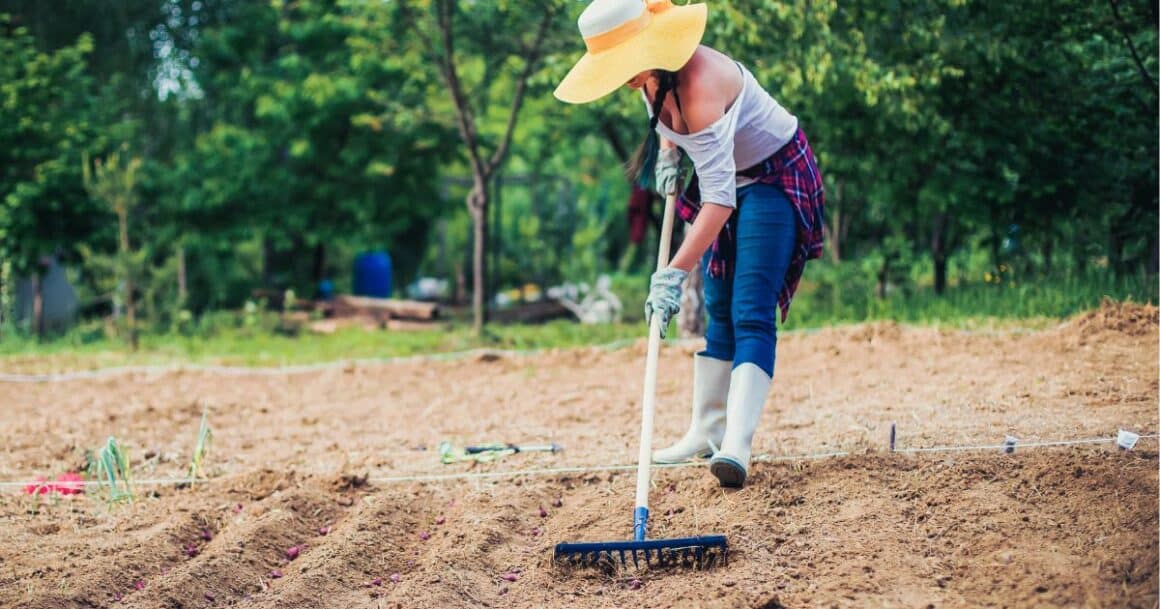
1. Prepare Your Garden
Once you’ve decided which kind of garden you’ll be using for your garlic plants, it’s time to get your hands dirty. Choose the perfect location.
First, choose a suitable spot in your garden. Garlic prefers full sun, so pick a sunny location. Next, clear the area of weeds and debris. Garlic doesn’t like competition, so give it a clean slate to work with.

2. Use Good-quality Soil
Now, let’s talk soil. Garlic loves well-draining soil. Consider amending your soil with organic matter like compost to improve drainage if your soil is heavy clay. Loose, loamy soil is garlic’s best friend, so make sure it’s got room to breathe.
3. Source Garlic Cloves to Plant
Visit a local nursery or order online from a reputable supplier. Look for bulbs labeled “seed garlic.” These are specifically grown for planting, ensuring a better crop.
When planting garlic in Arizona, you’ll want varieties that can handle the hot summer climate.
Here are some of the best choices:
California Early (Softneck garlic): Softneck varieties are known for their adaptability to warmer climates. They store well and have a mild flavor.
Inchelium Red (Softneck): Another excellent option for Arizona. It has a mild, sweet flavor and stores well.
Artichoke Garlic (e.g., California Late): These are quite reliable in warmer regions. They have a mild, sweet taste and are easy to grow.
Creole Garlic (e.g., Ajo Rojo): Creole varieties can thrive in Arizona’s climate if you like a bit of heat in your garlic.
Turban Garlic (e.g., Purple Glazer): Turban garlic adds color to your garden with its vibrant bulbs and mild, sweet flavor.
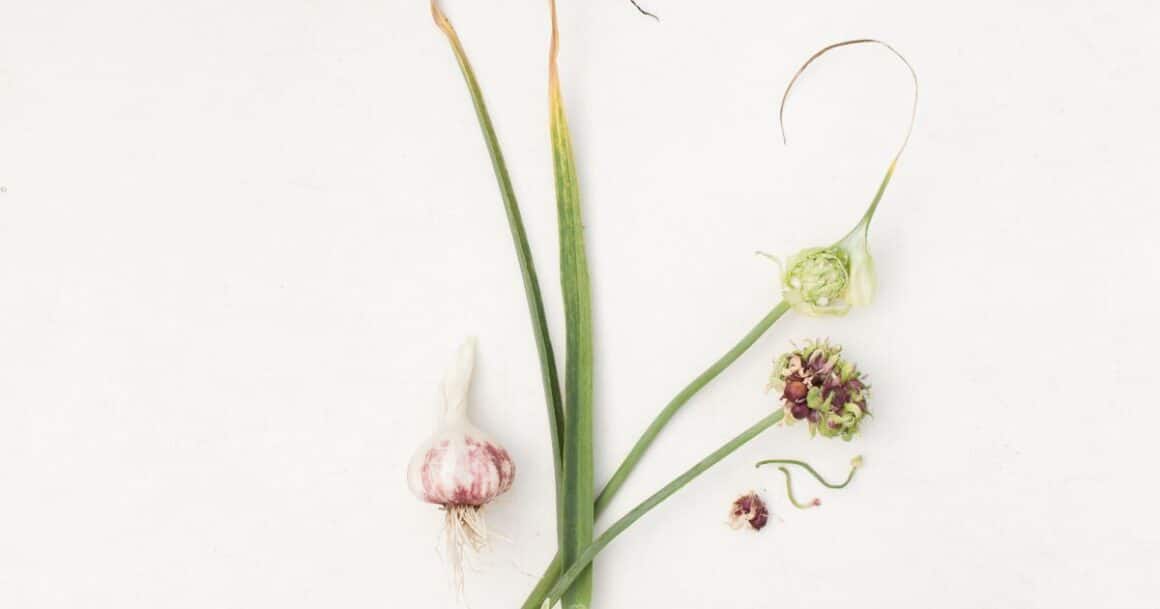
Where to buy Garlic Cloves
Local Nurseries and Garden Centers
Check out your nearby nurseries or garden centers. They often carry locally adapted garlic varieties perfect for your Arizona garden.
I love Moon Valley Nurseries and Summer Winds Nurseries in Phoenix, Arizona. I also go to both Home Depot and Lowe’s garden centers to purchase gardening supplies.
Online Seed Companies
Plenty of reputable online seed companies offer a wide selection of garlic varieties.
Websites like Burpee, Johnny’s Selected Seeds, and Baker Creek Heirloom Seeds are great places to start your search.
Local Farmer’s Market
These are treasure troves of local goodness! Visit your nearby farmers’ markets, especially during the planting season.
You’ll often find garlic growers who sell their bulbs. It’s a win-win – you get quality garlic while supporting local farmers and enjoying the vibrant atmosphere of a farmers’ market.
Online Marketplaces
Remember, online marketplaces like Amazon, Walmart, Etsy and eBay are great places to source garden supplies, including garlic for planting.

4. Plant Garlic bulbs
Here’s where the magic happens. Take each garlic bulb and break it into individual cloves. Each clove will grow into a new bulb. Plant them pointy side up, about two inches deep, and space them around six inches apart
Get the water Right.
Water your newly planted cloves gently but regularly. You don’t want to drown them, keep the soil evenly moist.
As they start growing, they’ll appreciate a balanced, organic fertilizer to boost them.
Use Organic Fertilizer
To help your garlic thrive, you’ll want to fertilize it. Opt for a balanced, organic fertilizer.
This will provide the nutrients your garlic needs without overwhelming it. Don’t overdo it; garlic prefers a gentle touch when feeding.
Compost: Ah, the gold standard of fertilizer. Compost is nutrient-rich, improves soil structure, and enhances water retention.
Fish fertilizer: Fish emulsion is high in nitrogen, which promotes healthy green growth. Dilute it in water and apply it as a liquid fertilizer.
Kelp fertilizer: Seaweed or kelp extracts are rich in micronutrients, growth hormones, and enzymes. Both fish and kelp fertilizers stimulate root development and enhance overall plant health.
Organic Liquid Fertilizers: These often contain a blend of nutrients that are easy to apply as a foliar spray or soil drench.
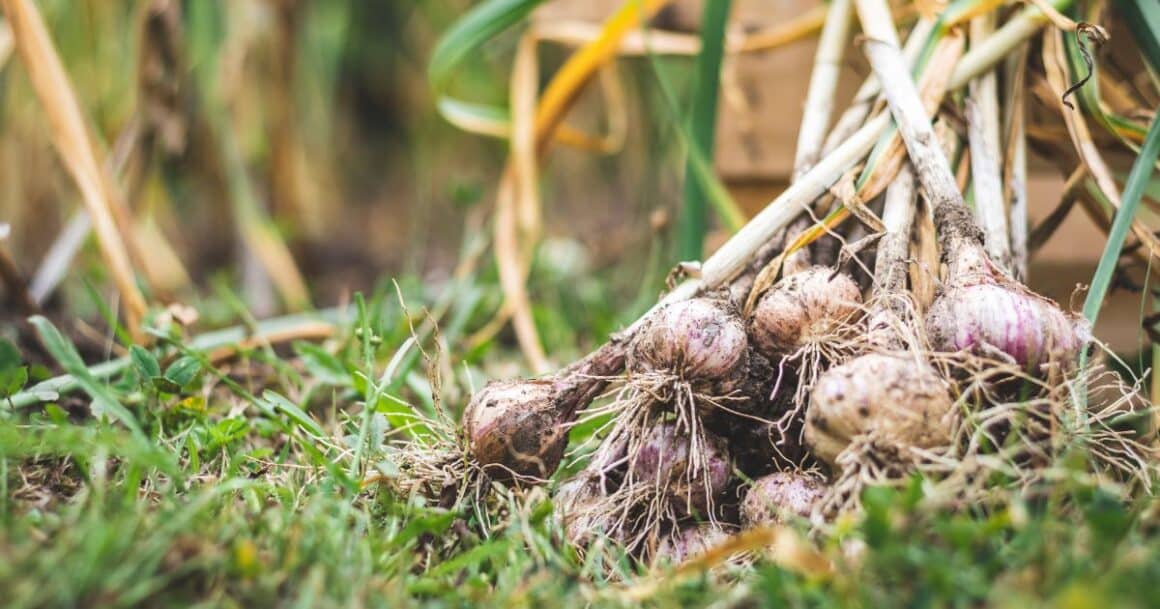
5. Harvest Garlic Cloves
Harvesting garlic is like unearthing buried treasure; the best part is that you don’t need a map to find it. Here’s how to do it:
Wait for the magic moment
Now, here’s the hard part. It takes about 8 to 9 months for a small planted garlic clove to develop into a ready-to-harvest head of garlic. I know it’s crazy. 🙂
When about half of the lower leaves have turned yellow and withered away (usually in late spring to early summer), that’s your cue. Your garlic bulbs are ready to shine!
Harvest your garlic plants gently!
Easy does it. Grab a garden fork or a shovel and carefully insert your fork or shovel about a few inches away from the base of the garlic plant.
You don’t want to stab your precious bulbs, so go easy. Apply some gentle upward pressure to lift the garlic bulbs from the soil. They should come up quite easily.
Once your garlic bulbs are out, gently shake them to remove loose soil. You don’t want to wash them at this stage; eliminate the excess dirt.
Cure Harvested garlic
Now, here’s the cool part. You need to cure your garlic to make it last longer.
Lay the bulbs in a single layer in a dry, well-ventilated place, like a shaded porch or garage. Leave them there for about 2-3 weeks.
This helps the outer layers dry and harden.
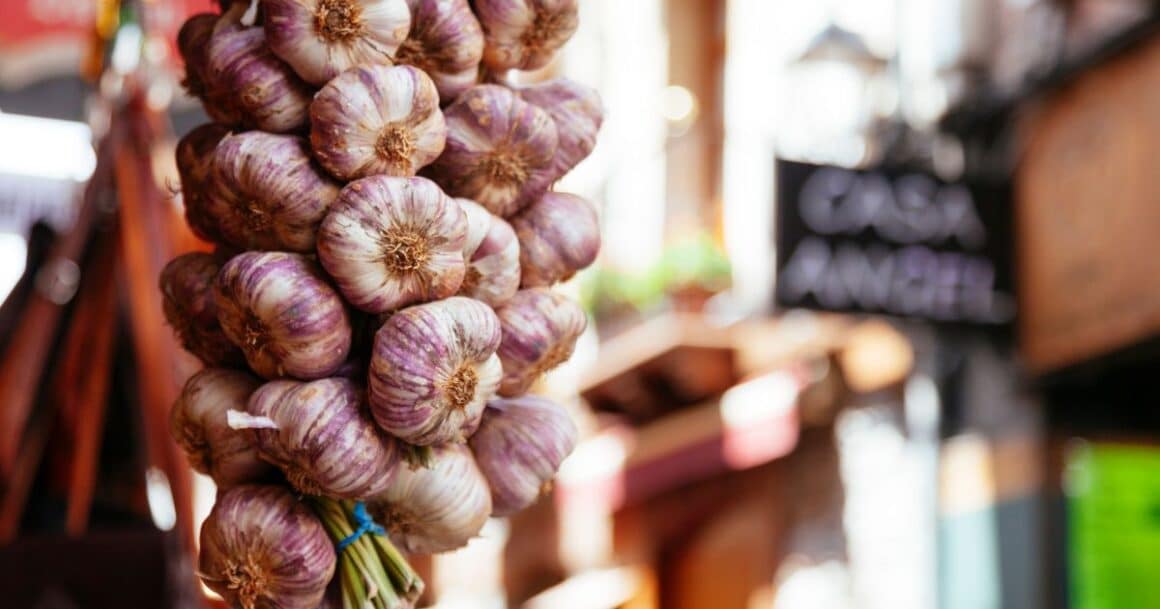
Tips for Storing Garlic
Let’s chat about how to store that garlic goodness properly. You’ve put in the effort to grow and harvest it, so let’s ensure it stays fresh and flavorful.
Keep it Cool and Dry: Garlic prefers a nice, dry spot. Find a dark corner in your pantry or kitchen that doesn’t get too warm or humid. Use mesh net bags or baskets for storage. Or Braid your garlic!
Don’t Refrigerate: Whatever you do, don’t put garlic in the fridge. Cold and humidity can cause it to sprout or go bad faster. Keep stored cloves dry in a dry location.
Store Whole Bulbs: It’s best to keep garlic in bulb form until you can use it. Breaking it apart exposes the cloves to air, which can shorten their shelf life.
Here’s a great resource about how to properly store garlic:
Gardening Know-How: Check out their guide on storing garlic for more insights and ideas.
FAQs: How to Grow Garlic in Arizona
Is it safe to use Baking soda in my garden?
Yes. (but I have never used it) Baking soda can help prevent fungal diseases like powdery mildew by mixing it with water and a little dish soap for a protective spray.
It can also deter weeds when sprinkled around your plants and even act as a barrier against certain pests like rabbits.
Plus, if your soil’s too acidic, a pinch of baking soda can nudge the pH up a bit. (source)
When is the best time to plant garlic in Arizona?
Fall, typically in late September to early October, is the ideal time for garlic planting in Arizona.
Can I grow garlic in containers or pots in Arizona?
Yes, you can grow garlic in containers with good drainage and adequate sunlight.
What’s the difference between hardneck and softneck garlic in terms of flavor?
Hardneck garlic tends to have a stronger, more robust flavor compared to the milder taste of softneck garlic.
How long does it take for garlic to mature and be ready for harvest?
Garlic typically takes about 8-9 months from planting to harvest, but this can vary based on local conditions.
Does Garlic Flower?
Yes! It sends up a long, curly stem called a scape when it starts growing. You’ll find a small bulbil or bulb-like structure at the tip of the scape. It looks a bit like a mini garlic bulb.
Some gardeners like to trim off the scapes to divert the plant’s energy into bulb growth, but others let them flower to save bulbils for planting.
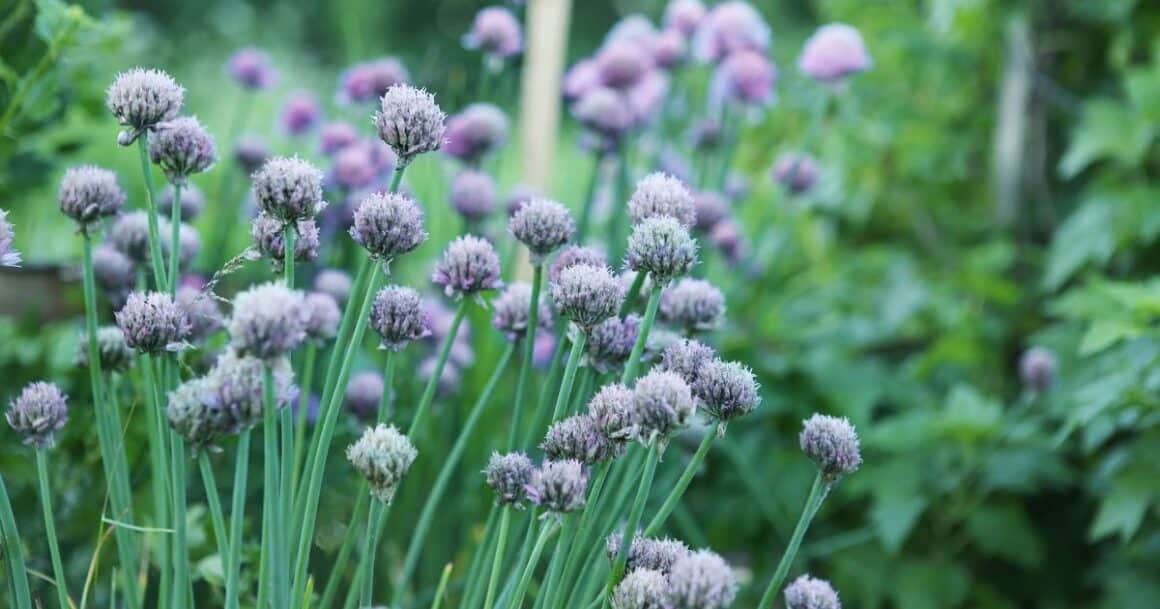
Conclusion: How to Plant Garlic in Arizona
Growing garlic in your Arizona garden can be a flavorful adventure, and tending to your herbs adds a tasty twist to your Arizona garden.
From finding the perfect spot for your garlic to creating a cozy storage space for your herb harvest, it’s all about enjoying the process and savoring the delicious rewards.
So, get your hands dirty, let the sun work its magic, and relish the joy of homegrown garlic and herbs in your culinary creations.
Happy gardening!
XO, Christine

I’ve been keeping it real since 1963. 😊
I’m a child of God, devoted wife, proud mama and grandma, full-time creative, domestic engineer, and passionate self-care enthusiast.
I’m purpose-driven and do my best to live each day with intention—whether shopping for treasures, painting in my art studio, digging in the garden, or cooking up something yummy for my family.
I’m always up for a good chat and love collaborating with fellow creatives and brands.
Let’s connect—don’t be shy!





